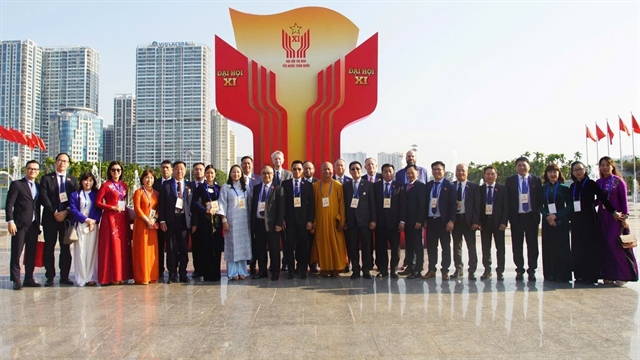 Talk Around Town
Talk Around Town

 |
| Illustration by Trịnh Lập |
by Nguyễn Mỹ Hà
So, you think you can grasp it, but it never gets easier: a single word, three letters, only one syllable, no tone. Nem, pronounced as it looks. In any other language, it would sound the same. The name of one of the most known Vietnamese dishes around the world, which has been loved and enjoyed both in and outside the country: delicious spring rolls.
Well, it turns out things are a little more complicated.
A few days ago, a group of young people were surprised they ordered at a Bún chả (grilled pork with fresh vermicelli in a fish-sauce-based dipping sauce) restaurant. When ordering, they said, "chả nem" instead of just "nem" because in their home town they all say "chả nem" for spring rolls, whereas in Hà Nội, it would just be nem.
When someone says nem in Hà Nội, it's just a shortened term for what are spring rolls today. People in Hà Nội of much older generations called them Nem Sài Gòn because the deep-fried rolls were originally a creation of people living in Sài Gòn, though the Saigonese actually called them "chả giò."
The word "nem" in northern Việt Nam used to stand for mixed half-cooked (or raw) pork meat and julienne boiled pork skins in golden roasted rice powder, lemon leaves, wrapped into fist-size balls to be consumed with rice alcohol. They are some of the best snacks people can have at a drinking party. Nem were even part of a popular saying, though no one knows the author.
"Tay cầm bầu rượu, nắm nem,
Mải vui quên hết lời em dặn dò."
It literally means, "A married man went to Lạng Sơn Province, the landscape was so beautiful, the Three-Echo Cave was magnificent, people walked around crowded and joyful, the man had a gourd of alcohol and a ball of nem. He had such a great time, he forgot everything his wife said to him before he left." I am sure some readers can relate.
But I digress. Going back to the bún chả eatery on Hàng Than Street, the owner and cook were confused by the order, uttering the Hà Nội's signature notorious line: "If it's not what you want, go elsewhere to eat!"
This could be a sentence that shuts your business down elsewhere, but not in Hà Nội. Nevertheless, the diners vented their anger on social media, saying the shop was wrong for denying their request.
Some others argue that if you are new to an eatery and there is confusion when eating, you should just point to a picture and order. Problem solved.
The ordering confusion in question may have been solved there and then, but when the incident was retold online, everyone had an opinion, as they started to explain what nem were called in their own hometowns.
To be safe, in Hà Nội a simple order for nem is enough, and it won't drive the seller crazy, especially at lunchtime. But when you travel outside of Hà Nội then the spring rolls are called "chả nem" in Hải Phòng, Hải Dương, Quảng Ninh, Nam Định and Thái Bình in the north.
Similar rolls, which only have shrimp inside and also deep-fried, are called "chả ram" in Thanh Hóa, Nghệ An, Hà Tĩnh, Đà Nẵng, Phú Yên and Bình Định.
In the south, they are called "chả giò" across the Mekong Delta.
There are exceptions to every rule, of course. In Bắc Ninh province, some people called them bánh đa nem rán (rice paper), or cuốn nem (rolls of nem). Generally, this way of saying it is not really correct, as "bánh đa" stands for rice paper, and nem is the finished roll.
On another level, chả is roasted meat and nem is fried rolls, but they stand for the same meaning. A popular saying goes "ông ăn chả, bà ăn nem, that is "when a man has an affair, so does his woman."
But "nem Sài Gòn" or "chả giò" are not only terms used for culinary purposes.
The women of Sài Gòn in the early 20th century were Westernised more deeply due to the French influence in the Mekong Delta. They often had their hair rolled to make it curly and attractive. When they had their front bangs curled, they used to call them "chả giò."
So, the name of the dish was its very own style! VNS




